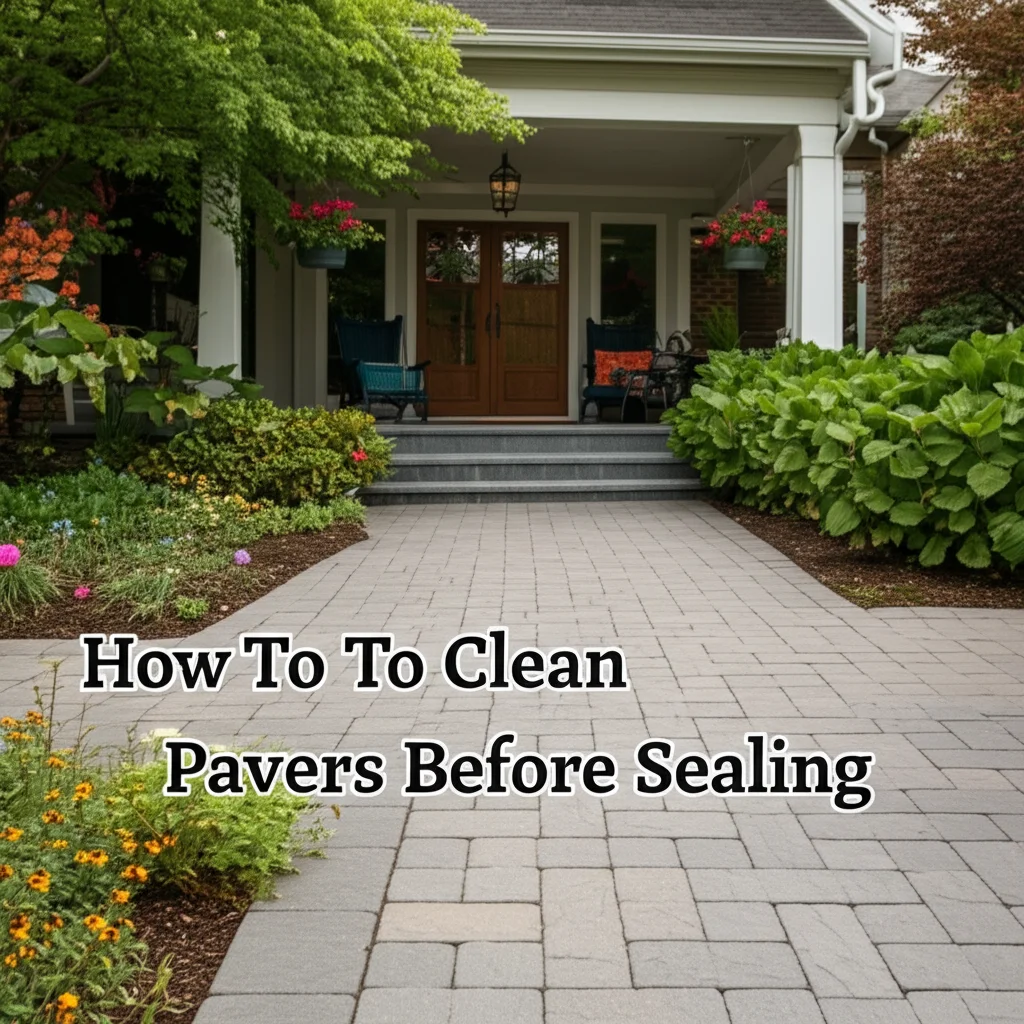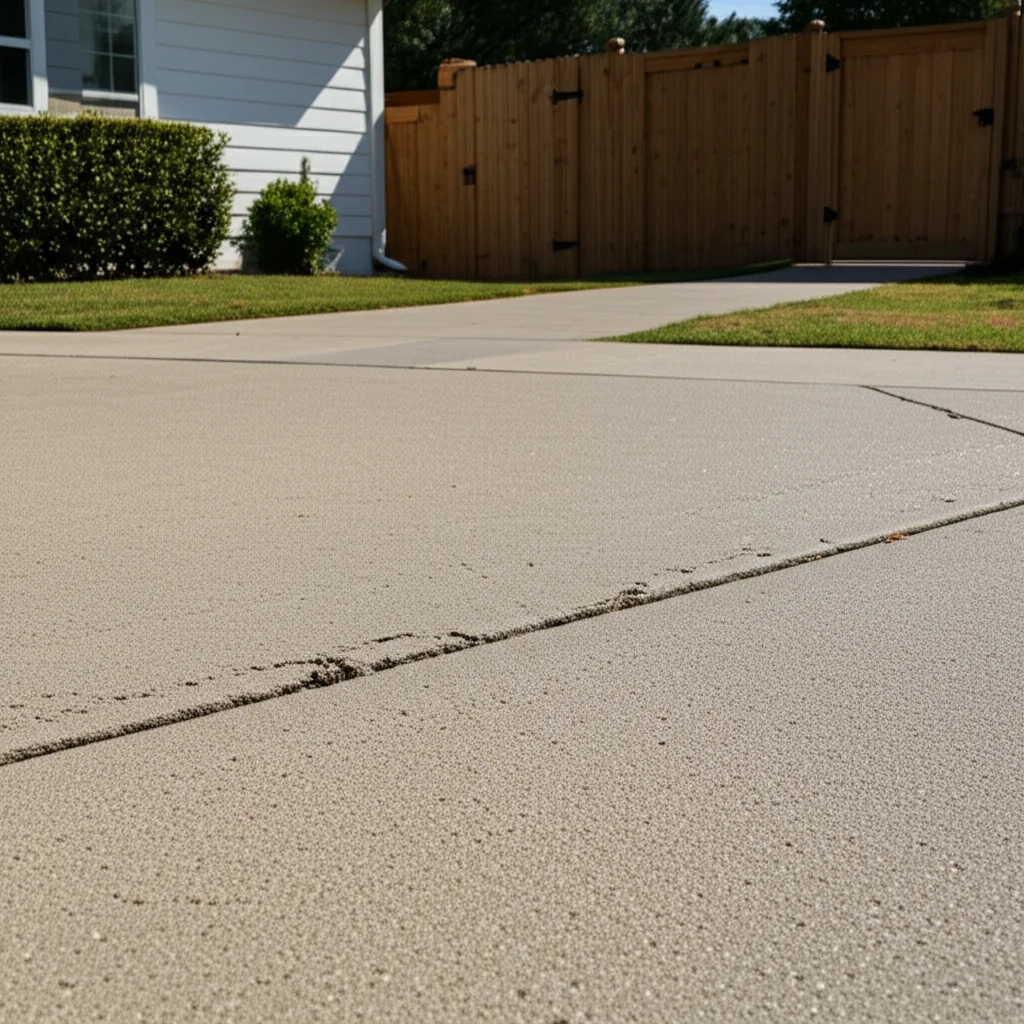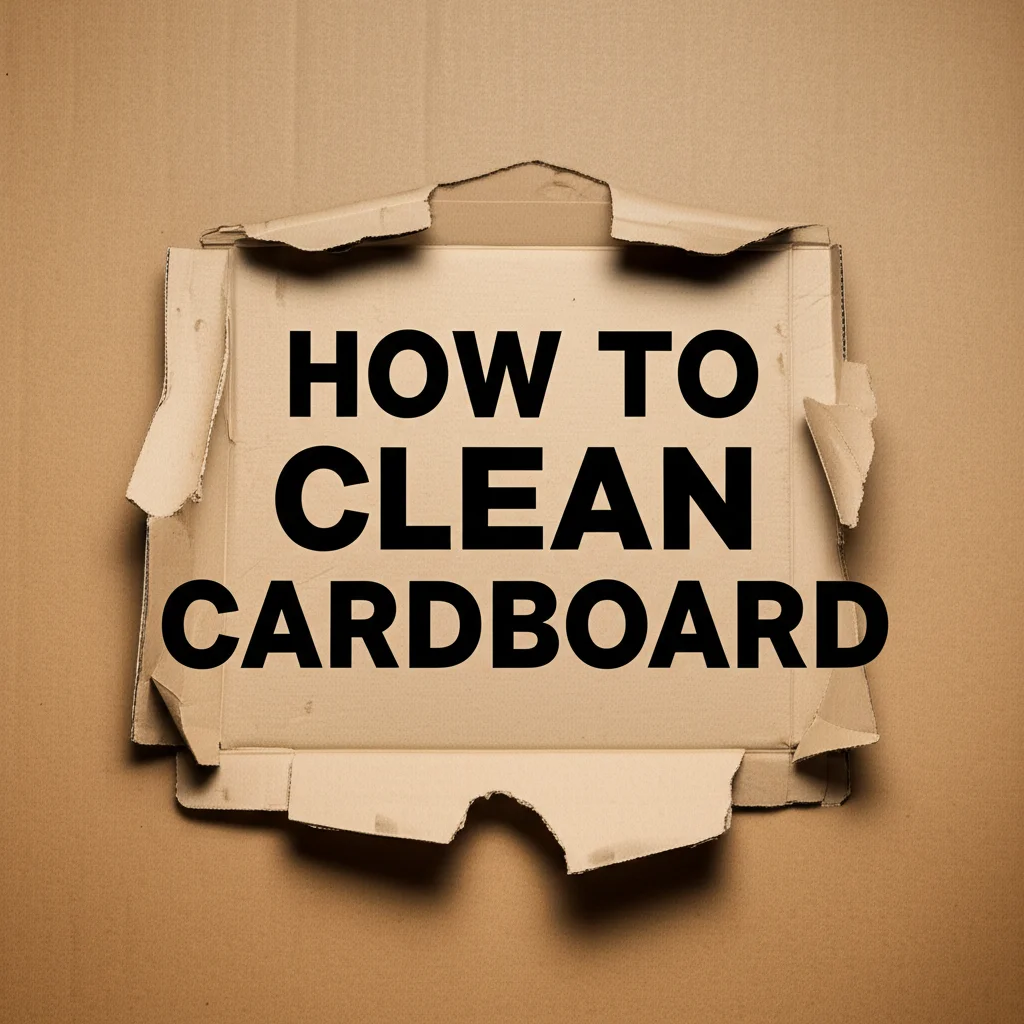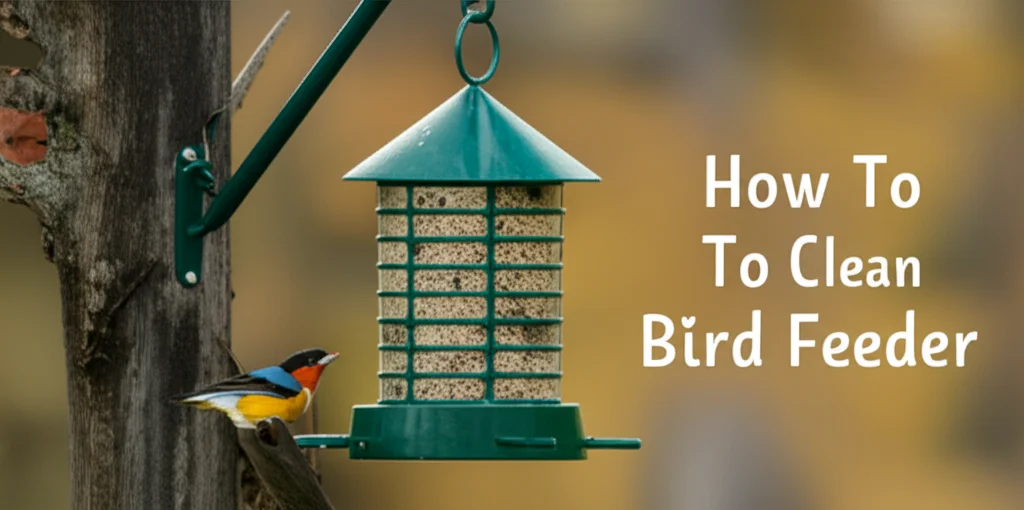· Todd Martin · Home Maintenance · 18 min read
How To Clean Driveway Pavers
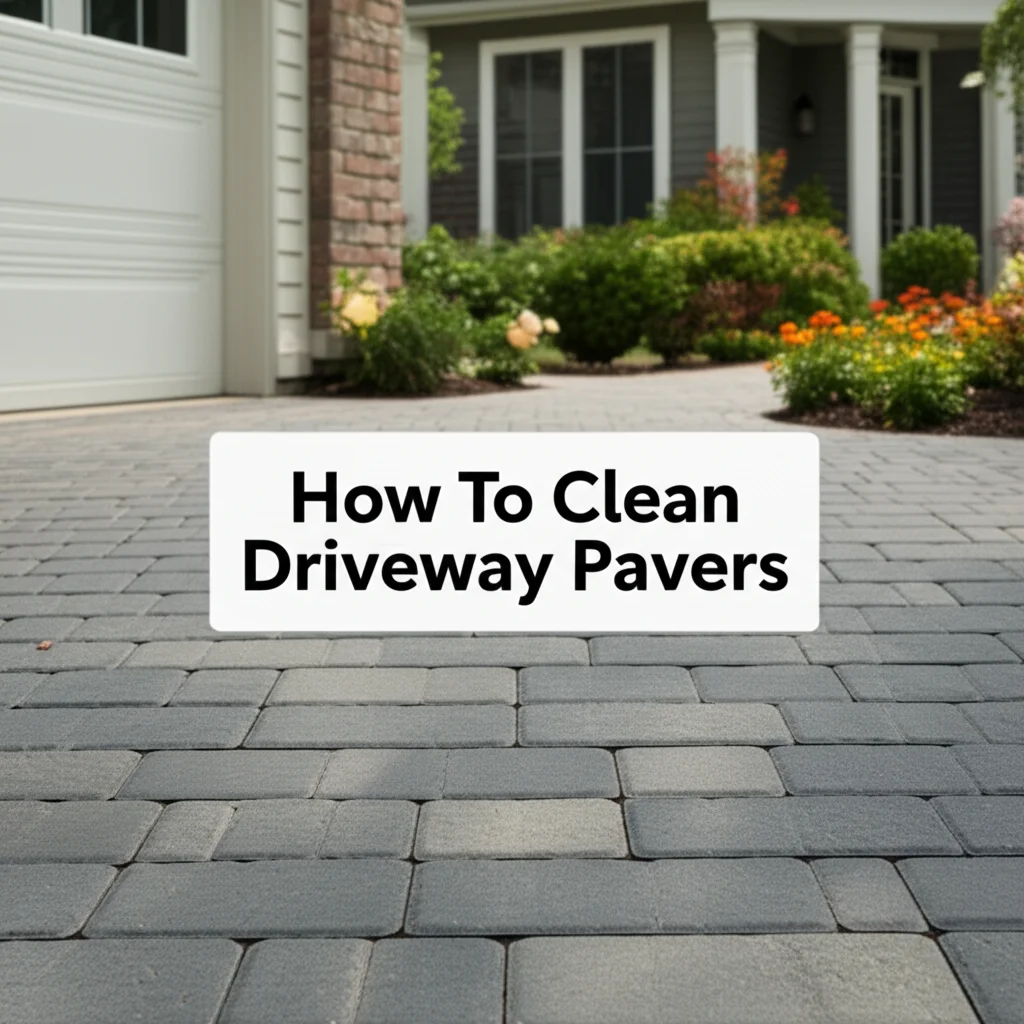
Restore Your Driveway: How To Clean Driveway Pavers Effectively
Your driveway pavers greet you and your guests every day. Over time, they collect dirt, grime, oil, and moss. A dirty driveway can reduce your home’s curb appeal. You might wonder, “How to clean driveway pavers to make them look new again?”
This guide shows you simple steps to restore your driveway’s beauty. We will discuss essential tools, cleaning methods, and how to tackle stubborn stains. You will learn about basic cleaning, special solutions, and long-term care for your pavers. Getting your driveway clean is easier than you think. Let’s make your pavers shine.
Takeaway
- Gather essential tools and clear the driveway before starting.
- Use pressure washing for deep cleaning or manual methods for light dirt.
- Address specific stains like oil, rust, and moss with targeted solutions.
- Consider DIY cleaners like vinegar for eco-friendly options.
- Maintain pavers with regular cleaning and consider sealing for long-term protection.
How to clean driveway pavers?
To clean driveway pavers, first remove loose debris. Then, apply a suitable cleaning solution—either a commercial cleaner, dish soap, or a vinegar solution. Scrub stubborn areas with a stiff brush. Rinse thoroughly with a garden hose or a pressure washer set to a low, fan-shaped spray.
Preparing Your Driveway Pavers for a Deep Clean
Before you begin the main cleaning process, proper preparation is important. This step helps achieve the best results. It also ensures your safety and protects your pavers from damage. I always start by gathering everything I need.
Gathering Essential Tools and Supplies
You need specific tools and supplies for a successful paver cleaning project. Having these items ready saves time and effort. Here is a list of what you will likely need:
- Stiff-bristled broom or leaf blower: To clear loose debris.
- Garden hose with spray nozzle: For rinsing.
- Pressure washer (optional but recommended): For deep cleaning. Make sure it has various nozzle tips.
- Buckets: For mixing cleaning solutions.
- Stiff-bristled brush or scrub brush: For scrubbing tough spots.
- Safety glasses and gloves: To protect your eyes and hands.
- Cleaning solution: This can be a specialized paver cleaner, dish soap, or white vinegar.
- Shovel or scraper: For removing large clumps of dirt or weeds.
Clearing the Driveway Area
The first physical step is to clear the entire driveway surface. Remove all vehicles, furniture, potted plants, and other items. This allows you to access every paver. A clear surface also prevents damage to these items during cleaning.
Sweeping and Pre-Rinsing for Optimal Results
After clearing, sweep the driveway thoroughly. Use a stiff-bristled broom or a leaf blower to remove loose dirt, leaves, twigs, and other debris. This prevents mud from forming when you add water. It also makes the main cleaning step more effective. After sweeping, pre-rinse the entire paver surface with a garden hose. This helps loosen caked-on dirt and prepares the pavers for your chosen cleaning solution. A good pre-rinse allows the cleaning agents to penetrate more effectively.
Basic Cleaning Methods for Driveway Pavers
Once your driveway is clear and prepped, you can choose your cleaning method. The best method depends on how dirty your pavers are. It also depends on the tools you have available. I often use a combination of methods for the best results.
Pressure Washing for Deep Cleaning Driveway Pavers
Pressure washing is highly effective for deep cleaning driveway pavers. It removes years of dirt, grime, and mildew quickly. When using a pressure washer, follow these tips:
- Choose the Right Nozzle: Use a wide-angle nozzle (25-degree or 40-degree) for general cleaning. A narrower 15-degree nozzle can tackle tough stains. Avoid zero-degree nozzles, as they can damage pavers or blast away joint sand.
- Maintain Proper Distance: Hold the nozzle at least 12-18 inches from the paver surface. Getting too close can erode the paver surface or dislodge joint sand.
- Work in Sections: Clean small sections at a time. Overlap your strokes slightly to ensure even cleaning. Move the wand steadily across the surface.
- Rinse Thoroughly: After applying any cleaning solution, rinse the entire area well. Make sure no cleaning residue remains.
Pressure washing offers great power, but improper use can cause damage. Always test a small, hidden area first. If you prefer to clean your driveway without a pressure washer, there are good alternatives. You can find more information on effective methods at how to clean driveway without pressure washer.
Manual Scrubbing for Lighter Dirt and Controlled Cleaning
If you do not have a pressure washer or prefer a gentler approach, manual scrubbing works well. This method is good for light dirt or specific stains. It gives you more control.
- Apply Cleaning Solution: Mix a cleaning solution in a bucket. This can be warm water with dish soap or a dedicated paver cleaner. Apply the solution generously to the pavers.
- Let it Sit: Allow the solution to soak into the dirt for 10-15 minutes. This helps loosen the grime.
- Scrub Actively: Use a stiff-bristled brush to scrub the paver surface. Apply good pressure, especially on areas with caked-on dirt or light stains.
- Rinse and Repeat: Rinse the scrubbed area with a garden hose. Check your results. Repeat the scrubbing and rinsing process if needed for cleaner pavers.
Manual scrubbing can be more labor-intensive. However, it is a safe and effective way to clean your pavers. It ensures you do not disturb the joint sand.
Tackling Common Stains on Driveway Pavers
Driveway pavers face many challenges, and stains are a common one. Oil, rust, and moss can make your beautiful driveway look unsightly. Knowing how to remove these specific marks is crucial. I have personally dealt with many of these common stains.
Removing Stubborn Oil and Grease Stains from Pavers
Oil and grease stains are among the most common on driveways. They often come from vehicles. These stains can be tough to remove if not addressed quickly.
- Act Fast: Fresh oil stains are easier to clean. Absorb as much oil as possible with cat litter, sawdust, or paper towels. Let the absorbent material sit for several hours, then sweep it up.
- Apply a Degreaser: For set-in stains, use a heavy-duty degreaser or a strong dish soap. Pour it directly onto the stain. Let it sit for 15-30 minutes. The degreaser breaks down the oil.
- Scrub and Rinse: Use a stiff brush to scrub the stain vigorously. Work the degreaser into the paver surface. Rinse thoroughly with hot water. You might need to repeat this process for older or deeper stains.
- Poultice Method: For very stubborn oil stains, create a poultice. Mix an absorbent material (like fuller’s earth or talcum powder) with a solvent (like mineral spirits or acetone) to form a paste. Apply the paste to the stain, cover with plastic wrap, and let it dry completely (12-24 hours). The paste will draw the oil out as it dries. Scrape away the dried paste and rinse. You can find a more detailed guide on how to remove these stains at how to clean oil off pavers. For other concrete surfaces, general advice for oil removal is similar, as seen in how to clean oil from concrete and how to clean grease from concrete.
Eradicating Moss, Algae, and Mold Growth
Moss, algae, and mold thrive in damp, shady conditions. They can make pavers slippery and look green or black. These growths also retain moisture, which can harm pavers over time.
- Scrape First: For thick moss, manually scrape away as much as you can with a stiff broom or a specialized moss scraper.
- Apply a Solution: Mix a solution of bleach and water (1 part bleach to 4 parts water) or a commercial moss and algae killer. Apply it to the affected areas. Let it sit for 15-30 minutes. Bleach is effective at killing these growths.
- Scrub and Rinse: Scrub the areas with a stiff brush to remove the dead growth. Rinse thoroughly with water. Ensure no residue remains, especially if you used bleach, as it can harm surrounding plants.
- Preventive Measures: Improve drainage around your driveway. Trim overhanging branches to increase sunlight exposure. Applying a paver sealer can also make the surface less hospitable for growth. A detailed guide on combating moss specifically can be found at how to clean moss off pavers. For mold on concrete, you can get additional tips from how to clean mold off concrete.
Dealing with Rust, Paint, and Other Tough Stains
Other stains, like rust, paint, or tire marks, also need specific treatments.
- Rust Stains: Rust stains come from metal furniture or vehicle parts. Use a rust remover specifically designed for concrete or pavers. Apply according to product instructions, then rinse. Acidic cleaners, like those containing phosphoric or oxalic acid, often work well for rust. For general concrete stain advice, consider how to clean rust off concrete.
- Paint Stains: Fresh paint stains can often be scrubbed with soap and water. For dried paint, use a paint stripper or a wire brush carefully. Test in an inconspicuous area first, as strippers can affect paver color. Learn more about removing paint from concrete surfaces at how to clean paint off concrete.
- Antifreeze Stains: These green or orange stains can be toxic. Treat them quickly. Use absorbent materials first, then a strong detergent or degreaser. Scrub and rinse well. For more on antifreeze, see how to clean antifreeze off driveway.
- Tire Marks: Tire marks are common on driveways. Often, a good pressure wash with a strong detergent can remove them. For stubborn marks, a specialty concrete cleaner designed for carbon or rubber may be needed. Scrub with a stiff brush and rinse thoroughly.
- Food and Drink Stains: These stains often respond well to a mixture of dish soap and warm water. For red wine or berry stains, a diluted bleach solution (1 part bleach to 10 parts water) might be needed. Always rinse thoroughly.
Always test any cleaning product on a small, hidden area first. This ensures it does not damage or discolor your pavers. Different paver materials might react differently to chemicals.
DIY Cleaning Solutions for Pavers
You do not always need harsh chemicals to clean your driveway pavers. Many effective and eco-friendly solutions exist using common household items. I often use these DIY methods for general cleaning and lighter stains.
The Power of White Vinegar for Cleaning Pavers
White vinegar is a fantastic natural cleaner. It is acidic, which helps break down dirt, efflorescence, and even some light organic growth like moss or algae. It is also safe for the environment and for your pavers when used correctly.
- General Cleaning: For overall cleaning, mix equal parts white vinegar and water in a spray bottle or bucket. Apply the solution generously to your pavers. Let it sit for 15-30 minutes. Then, scrub with a stiff brush and rinse thoroughly with water.
- Moss and Algae: For more concentrated organic growth, use undiluted white vinegar. Spray or pour it directly onto the moss. Let it sit for an hour or two. The acidity will kill the growth. Then, scrub and rinse. You might need to repeat this for heavy infestations.
- Efflorescence (White Haze): Vinegar can also help remove efflorescence, which is a white powdery deposit on pavers. Scrub the affected areas with a strong vinegar and water solution (1 part vinegar to 2 parts water). Rinse well.
Using vinegar is a gentler option than bleach. It is also less likely to harm nearby plants. For a more detailed look at using vinegar, check out how to clean pavers with vinegar.
Dish Soap and Water: Simple Yet Effective
For routine cleaning and light dirt, a simple solution of dish soap and warm water is often enough. This method is gentle and safe for most paver types.
- Mix the Solution: Add a few squirts of liquid dish soap to a bucket of warm water. The soap creates suds that lift dirt and grime from the paver surface.
- Apply and Scrub: Pour the soapy water over a section of your driveway pavers. Use a stiff-bristled brush or a broom to scrub the surface. Focus on high-traffic areas or spots with visible dirt.
- Rinse Thoroughly: Once you have scrubbed a section, rinse it completely with a garden hose. Make sure all soap residue is gone, as left-over soap can attract more dirt.
This method is great for regular maintenance cleans. It is also a good first step before trying stronger solutions on tough stains. I find it works wonders for keeping the general appearance of my driveway neat.
Considerations for Bleach and Other Strong Cleaners
While powerful, cleaners like bleach or muriatic acid need careful handling. They are effective for mold, mildew, and deeply set stains. However, they can also cause damage or discoloration if not used correctly.
- Bleach (Diluted): For severe mold or mildew, dilute bleach with water (1 part bleach to 4-5 parts water). Apply it to the affected area. Let it sit for no more than 15-20 minutes. Always rinse immediately and thoroughly. Protect nearby plants by wetting them down before and after application. Bleach can strip color from some pavers. Test in a hidden spot first.
- Muriatic Acid (Last Resort): Muriatic acid is very strong and corrosive. It is usually reserved for efflorescence or very tough stains that other methods cannot touch. It can etch or damage pavers if used improperly. Always dilute it heavily (1 part acid to 10-20 parts water). Wear full protective gear (gloves, eye protection, respirator). Never pour water into acid; always add acid to water. Rinse extensively. I highly recommend hiring a professional if you think you need to use muriatic acid. It is a risky option for homeowners.
Always follow the manufacturer’s instructions for any commercial cleaner. Ensure proper ventilation. Take all safety precautions to protect yourself and your property.
Cleaning Specific Paver Types: Limestone and Beyond
Different paver materials require different cleaning approaches. Understanding your paver type is important. It ensures you use the right cleaners and methods. This prevents damage and preserves the paver’s appearance.
Special Considerations for Limestone Pavers
Limestone is a beautiful natural stone, but it is softer and more porous than concrete pavers. This means it is more sensitive to acidic cleaners.
- Avoid Acids: Do not use vinegar, citric acid, or strong commercial acid-based cleaners on limestone. These can etch, dull, or even dissolve the stone.
- Gentle Cleaning: For regular cleaning, use plain water and a mild, pH-neutral stone cleaner. You can also use a gentle dish soap. Apply the cleaner, scrub with a soft-bristled brush, and rinse well.
- Stubborn Stains: For tough stains on limestone, a poultice method with a non-acidic cleaner is best. Mix an absorbent powder (like talc or kaolin clay) with a mild alkaline cleaner or hydrogen peroxide. Apply the paste, cover, let it dry, and then scrape away.
- Pressure Washing: Use a very low-pressure setting (under 1000 PSI) and a wide fan tip if using a pressure washer. Hold it far from the surface.
- Sealing: Sealing limestone is highly recommended. It protects the porous surface from stains and moisture absorption. For more specific advice on this delicate material, refer to how to clean limestone pavers.
Concrete, Brick, and Other Common Paver Materials
Most driveway pavers are made from concrete, brick, or a blend of aggregates. These materials are generally more robust than natural stone.
- Concrete Pavers: These are very common. They handle most cleaning methods well. You can typically use pressure washing, dish soap, or commercial concrete cleaners. Diluted bleach or vinegar is also usually safe for concrete, though a patch test is always smart. They can sometimes develop efflorescence.
- Brick Pavers: Made from fired clay, brick pavers are durable. They can withstand pressure washing and general cleaning solutions. Moss and algae can be common on brick. Use a stiff brush and appropriate cleaners. Be careful with highly acidic cleaners, as they can sometimes etch the brick surface.
- Permeable Pavers: These pavers have larger gaps for water drainage. When cleaning, be extra careful not to blast away the permeable joint material (often gravel or coarse sand). Pressure wash at a low setting and avoid direct, high-pressure streams on the joints.
Always identify your paver material before choosing a cleaning product. When in doubt, start with the gentlest method. Then, move to stronger solutions only if needed. Testing a small, hidden area is always a good practice.
Protecting Your Clean Driveway Pavers: Sealing and Maintenance
Cleaning your driveway pavers is a great start. To keep them looking good and extend their lifespan, consider sealing and regular maintenance. These steps protect your investment. I always recommend proactive care after a deep clean.
The Benefits of Sealing Driveway Pavers
Sealing your pavers creates a protective barrier on the surface. This barrier offers several important benefits.
- Stain Resistance: A good sealer makes pavers less porous. This significantly reduces the absorption of oil, grease, and other liquids. Stains become easier to clean off the surface rather than soaking in.
- Color Enhancement and Protection: Sealers can deepen the colors of your pavers, giving them a “wet look” or a natural finish. They also protect the pavers from UV fading caused by sunlight.
- Weed and Moss Inhibition: Some sealers can help stabilize the joint sand, making it harder for weeds to sprout. The smoother, less porous surface also makes it less inviting for moss and algae to grow.
- Durability and Longevity: Sealing provides an extra layer of protection against weathering, erosion, and general wear and tear. This helps your pavers last longer and look better for many years.
Sealing is an important step after a thorough cleaning. It locks in that fresh, clean look. You can learn more about preparing your pavers for this step at how to clean pavers before sealing.
Choosing the Right Paver Sealer
There are various types of paver sealers available, each with different properties.
- Penetrating Sealers: These sealers soak into the paver material. They provide protection from within without changing the paver’s appearance. They offer good stain resistance and breathability.
- Topical (Film-Forming) Sealers: These create a protective film on the surface of the paver. They often enhance color and can provide a “wet look.” They offer excellent stain protection. However, they might be more prone to showing scratches or peeling over time if not applied correctly.
- Types of Finishes: Sealers come in natural, matte, semi-gloss, and high-gloss finishes. Choose one that matches your aesthetic preference.
- Water-Based vs. Solvent-Based: Water-based sealers are generally easier to apply and clean up. They have lower VOCs (volatile organic compounds). Solvent-based sealers often penetrate deeper and offer stronger protection, but they have stronger fumes and require more careful handling.
Always read product labels carefully. Make sure the sealer is compatible with your specific paver material. Consider the local climate too; some sealers perform better in certain conditions.
Routine Maintenance for Long-Lasting Paver Beauty
Regular, simple maintenance is key to keeping your pavers clean between deep cleans.
- Regular Sweeping: Sweep your driveway regularly to remove leaves, dirt, and debris. This prevents organic matter from breaking down and staining the pavers.
- Prompt Stain Removal: Address spills and stains immediately. The sooner you clean a stain, the easier it is to remove. Keep a small brush and a mild cleaner handy for quick clean-ups.
- Weed Control: Pull weeds as soon as they appear in the paver joints. Weeds can disrupt the joint sand and eventually damage the paver structure. Consider using an organic weed killer for stubborn ones.
- Re-sanding Joints: Over time, joint sand can erode or wash away. Reapply polymeric sand or regular joint sand as needed. This stabilizes the pavers and prevents weed growth.
- Annual Cleaning: Aim for at least one thorough cleaning of your driveway pavers each year. This helps remove accumulated dirt and prepares the surface for re-sealing if necessary.
By combining deep cleaning with sealing and regular maintenance, your driveway pavers will stay beautiful for many years. This helps maintain your home’s curb appeal and protects your investment.
Troubleshooting Common Driveway Paver Cleaning Problems
Even with the best intentions, you might encounter specific challenges when cleaning your driveway pavers. Knowing how to address these common issues helps you achieve a truly clean and durable surface. I have faced these problems myself, and there are solutions.
Dealing with Efflorescence: The White Haze
Efflorescence is a common problem with pavers. It appears as a white, powdery residue on the surface. This happens when water moves through the pavers, dissolves mineral salts within, and then evaporates, leaving the salts behind.
- What It Is: Efflorescence is a natural occurrence, especially with new pavers or in areas with high moisture. It is typically harmless to the paver structure.
- Removal Methods:
- Dry Brushing: For light efflorescence, simply brush it away with a stiff broom when the pavers are dry.
- Water Rinse: Sometimes, a strong rinse with plain water can wash away the residue.
- Vinegar Solution: As mentioned earlier, a diluted white vinegar solution (1 part vinegar to 2-3 parts water) is effective. Apply, scrub, and rinse thoroughly. Test first, especially on darker pavers, as it can sometimes lighten them slightly.
- Commercial Efflorescence Cleaner: For stubborn cases, use a dedicated efflorescence remover. These cleaners are typically acidic. Follow the product instructions carefully. Always test on a small, hidden area first.
- Prevention: Ensure proper drainage around your pavers to minimize standing water. A quality sealer can also help reduce the movement of moisture through the pavers, thus preventing efflorescence.
Efflorescence usually disappears over time with rain and regular cleaning. If it persists, a specialized cleaner will often solve the problem.


